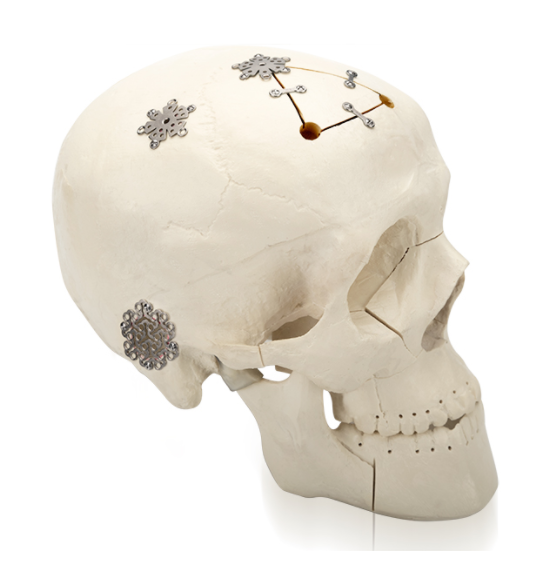The Revolutionary Impact of Advanced Cranial Systems in Modern Healthcare
Modern medicine has witnessed remarkable transformations through technological advancements, with cranial systems emerging as a cornerstone of innovative medical solutions. These sophisticated systems have revolutionized how healthcare professionals approach diagnosis, treatment, and monitoring of various neurological conditions. By integrating cutting-edge technology with precise medical expertise, cranial systems have become indispensable tools in contemporary medical practice, offering unprecedented accuracy and patient care possibilities.
The evolution of cranial systems represents a significant leap forward in medical technology, combining advanced imaging capabilities with precise intervention tools. These systems have transformed the landscape of neurosurgery, neurological diagnostics, and therapeutic applications, making previously challenging procedures more accessible and significantly more accurate. As we delve deeper into this topic, we'll explore the various applications that demonstrate why cranial systems have become fundamental to modern medicine.
Neurosurgical Applications of Cranial Systems
Precision-Guided Surgery and Navigation
In the realm of neurosurgery, cranial systems have revolutionized surgical precision and planning. These advanced systems provide real-time navigation capabilities, allowing surgeons to navigate through complex brain structures with unprecedented accuracy. The integration of high-resolution imaging with sophisticated tracking systems enables surgeons to visualize critical structures and plan optimal surgical approaches before making a single incision.
Modern cranial systems incorporate advanced mapping technologies that create detailed 3D representations of the patient's brain architecture. This capability allows surgical teams to identify and avoid critical areas while accessing target regions with minimal invasion. The result is significantly reduced surgical risks and improved patient outcomes, marking a new era in neurosurgical intervention.
Tumor Resection and Treatment Planning
When dealing with brain tumors, cranial systems play a pivotal role in both planning and execution of surgical procedures. These systems enable surgeons to precisely map tumor locations, determine their boundaries, and plan the safest approach for resection. The integration of multiple imaging modalities within cranial systems provides comprehensive visualization of tumor characteristics, helping surgeons make informed decisions during critical procedures.
Advanced cranial systems also facilitate real-time monitoring during tumor removal, ensuring that surgeons can track their progress and make necessary adjustments throughout the procedure. This level of precision and control has significantly improved the success rates of tumor resections while minimizing potential damage to surrounding healthy tissue.
Diagnostic Applications and Monitoring
Advanced Neurological Imaging
The diagnostic capabilities of modern cranial systems extend far beyond traditional imaging methods. These systems combine multiple imaging modalities, including MRI, CT, and PET scans, to create comprehensive views of brain structure and function. This multi-modal approach enables healthcare providers to detect subtle abnormalities and track changes over time with unprecedented detail.
Cranial systems have particularly excelled in providing detailed functional mapping of the brain, helping clinicians understand both normal and pathological patterns of brain activity. This enhanced understanding has proven invaluable in diagnosing various neurological conditions and planning appropriate interventions.
Continuous Monitoring and Assessment
One of the most significant advantages of modern cranial systems is their ability to provide continuous monitoring of brain function and patient status. These systems can track various parameters, including intracranial pressure, blood flow, and neural activity, providing real-time data that helps medical teams respond quickly to changes in patient condition.
The integration of artificial intelligence and machine learning algorithms into cranial systems has further enhanced their monitoring capabilities. These advanced features can detect subtle patterns and potential complications before they become clinically apparent, enabling preemptive interventions and improved patient care.

Therapeutic Applications and Treatment Delivery
Targeted Drug Delivery Systems
Modern cranial systems have revolutionized drug delivery methods for neurological conditions. These systems enable precise targeting of therapeutic agents to specific brain regions, maximizing treatment effectiveness while minimizing side effects. The ability to deliver medications directly to affected areas has opened new possibilities for treating various neurological disorders, from brain tumors to neurodegenerative diseases.
Advanced cranial systems also facilitate the monitoring of drug distribution and effectiveness, allowing medical teams to adjust treatment protocols in real-time. This level of control and precision in drug delivery represents a significant advancement in neurological treatment options.
Radiation Therapy Planning
In the context of radiation therapy, cranial systems play a crucial role in treatment planning and execution. These systems enable precise targeting of radiation beams, ensuring maximum therapeutic effect on target tissues while minimizing exposure to healthy brain structures. The integration of advanced imaging and positioning systems allows for highly accurate radiation delivery, improving treatment outcomes and reducing side effects.
The continuous monitoring capabilities of cranial systems during radiation therapy ensure that treatments remain precisely targeted throughout the course of therapy. This level of accuracy and control has significantly improved the safety and effectiveness of radiation treatments for various brain conditions.
Future Prospects and Emerging Technologies
Integration with Artificial Intelligence
The future of cranial systems lies in their increasing integration with artificial intelligence and machine learning technologies. These advancements promise to enhance diagnostic accuracy, treatment planning, and real-time decision support during procedures. AI-powered cranial systems will be capable of processing vast amounts of data to identify patterns and predict outcomes, further improving patient care.
Research is currently underway to develop more sophisticated algorithms that can analyze complex neurological data in real-time, potentially revolutionizing how we approach neurological diagnosis and treatment. These developments suggest a future where cranial systems become even more integral to medical decision-making and patient care.
Miniaturization and Enhanced Accessibility
Another promising direction in the evolution of cranial systems is the trend toward miniaturization and increased accessibility. Future systems are expected to become more compact and portable while maintaining their sophisticated capabilities. This development will make advanced neurological care more accessible to healthcare facilities worldwide, potentially democratizing access to high-quality neurological care.
Additionally, ongoing research into wireless and remote monitoring capabilities suggests that future cranial systems may enable enhanced remote patient monitoring and telemedicine applications, further expanding their utility in medical practice.
Frequently Asked Questions
What makes modern cranial systems different from traditional medical imaging systems?
Modern cranial systems integrate multiple imaging modalities, real-time monitoring capabilities, and advanced navigation features into a single comprehensive platform. Unlike traditional imaging systems, they provide interactive, real-time guidance during procedures and can continuously monitor various physiological parameters, making them much more versatile and powerful tools for medical professionals.
How do cranial systems improve patient outcomes in neurosurgery?
Cranial systems improve patient outcomes by providing precise surgical navigation, real-time monitoring, and advanced imaging capabilities. These features enable surgeons to plan and execute procedures with greater accuracy, minimize invasiveness, and reduce the risk of complications, ultimately leading to better recovery and improved patient outcomes.
What role do cranial systems play in personalized medicine?
Cranial systems enable personalized medicine by providing detailed individual patient data and allowing for customized treatment planning. They help medical teams tailor interventions to each patient's specific condition and anatomy, while continuous monitoring capabilities ensure that treatments can be adjusted based on individual response patterns.
 EN
EN
 FR
FR
 ES
ES
 AR
AR

